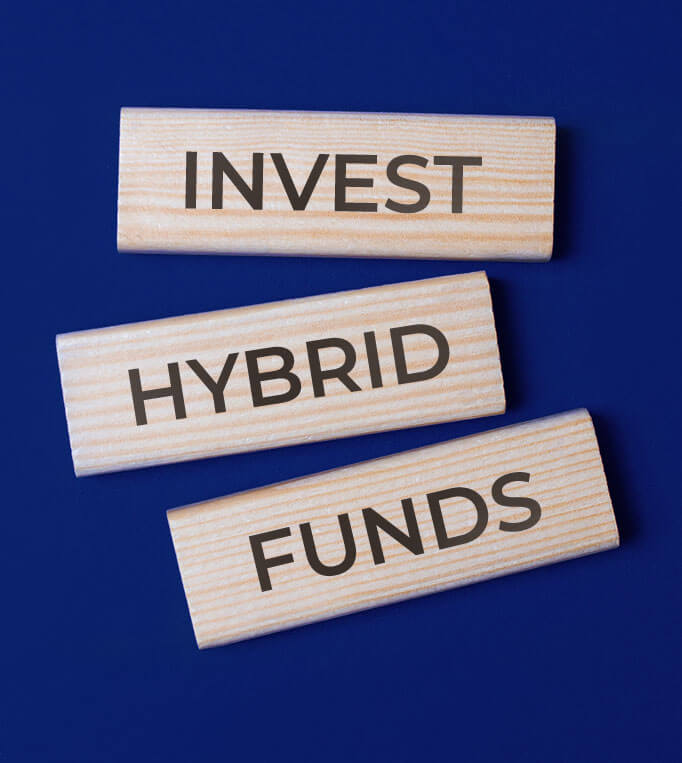Hybrid funds offer you a simple way to diversify your portfolio across asset classes. You can benefit from the higher returns from equity and hedge your risk through debt allocation.
Two-in-one: Get a diversified portfolio in a single investment
Tailored choices: You can choose a fund that works for you. If you have a higher risk appetite, there is an aggressive fund. If you want a safer choice, conservative is the way to go. If you want to benefit from changes in the market, you can opt for dynamic allocation or multi-asset funds in case of greater diversification.
With JM Financial Services Limited, you can invest in a wide range of hybrid funds in no time. Our user-friendly platform offers screeners and tools to help narrow your choices based on your risk appetite and financial goals.

A hybrid mutual fund invests in a mix of equity and debt instruments to provide investors with higher returns from equity and safety from debt. Hybrid funds are also called balanced mutual funds. Depending on the composition of equity and debt, hybrid funds are further classified into conservative, balanced or aggressive.
Hybrid funds aim to bring the benefits of two different asset classes in one mutual fund. So, you can expect higher returns from equity and safety from debt.
Diversification across asset classes: Hybrid mutual funds provide investors with diversification across two asset classes, and diversification reduces risk of a portfolio.
Risk and return: Hybrid funds aim to balance risk and return by combining equity and debt in different proportions.
Wide choice: Hybrid funds come in seven sub-categories, providing all kinds of investors with a suitable option.
Any investment you choose must be aligned with your risk appetite, financial goals, and time horizon. Like any mutual fund scheme, you should evaluate hybrid funds on how they have performed across different market cycles, how they have performed against the benchmark and other funds in the same category, how the fund is managed, The expense ratio of the fund, etc.
Also, hybrid funds span across seven sub-categories. So, choose a type of hybrid fund that is aligned to your needs. The categories include:
Conservative hybrid fund: This is ideal for a risk averse investor as it invests 10-25% in debt and up to 75-90% in equity.
Balanced hybrid fund: This fund invests equally between equity and debt (40-60% in both) and is good for those who want a middle path.
Aggressive hybrid fund: This invests largely in equity (75-90%) and a smaller portion in debt (10-25%) and is suitable for investors who can take a little more risk.
Dynamic Asset Allocation or Balanced Advantage: Based on market conditions, the fund house changes allocation between debt and equity and can range from 0-100% in both.
Multi asset allocation: This fund invests in at least three asset classes with a 10% allocation to each.
Arbitrage fund: This fund aims to take advantage of price differences between different markets and invests up to 65% in equity.
Equity savings: Invests 65% or more in equity, 10% or more in debt and also invests in derivatives.
A hybrid fund invests in a mix of equity and debt instruments. Depending on the fund’s objective and category, the fund manager allocates the assets between debt and equity. The risk and return profile of a hybrid fund depends upon its composition.





















